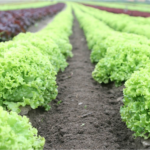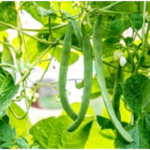APPLE FRUIT CULTIVATION
Dive into the world of apple cultivation, from growth stages and spacing tips to the myriad health benefits these fruits offer. A comprehensive guide to nurturing and enjoying nature's crisp delights.

Apple is a fruit that is cultivated worldwide and it is the most widely grown species in the genus Malus. Apple originated from Kazakhstan in central Asia in the east of the Caspian Sea. Apple is a deciduous woody perennial tree that grows in temperate regions, where there is cold winter, moderate summer and medium to high humidity. It offers incredible and multiple health benefits.
Apples tend to grow from 10 to 30 feet in height and almost as wide and may take up to 6 years to bear their first fruit. It is slow in age though moderately fast growing and can live for 100 years or even more. When apple set fruits it takes 100 to 200 days to reach harvest depending on the variety and can yield from 75 to more than 30pounds of fruit per year. Apples that are planted in partial sunlight won’t bear as much fruit as those planted in full sun. To prevent pest and disease infestation, avoid planting an apple in the same spot where it was previously grown.
Apple spacing
Apples are spaced according to their height as we have apples with different heights, the likes of standard height, semi-dwarf and lastly the dwarf type. For apples with standard height which grows up to 20-30 feet in height, its spacing can be 25-30 feet apart. While the semi-dwarf type can grow from 12 -15 feet in height, they are spaced 15 feet apart. Dwarf types of apple trees are spaced 8-10 feet apart because they grow from 6 – 10 feet in height. Therefore, if you are short of space it is advisable to plant dwarf trees as they can also be grown in containers.
Growth stages of apple tree
Year 1. Apple variety budded/grafted to rootstock:
For the first year of growth, the apple begins with rootstock and a budded/grated variety. The rootstock determines certain characteristics of your tree as it grows, including its mature size and tolerance to water and cold weather. When ordering a new apple, the sizes desired at maturity will be chosen e.g dwarf, semi-dwarf, or the occasional standard. Be careful to choose the size that best suits your need and available space
Year 2. Development to top growth: As the new apple tree gets established and breaks dormancy, a new leaf begins to appear. It is at this point that you will begin applying fertilizer and start the growing season spray routine.
Year 3-4. Limb, Leaf, and Root Growth: A healthy apple tree will have put on many branches and leaves and the truck will have increased in diameters. Apple trees bloom and start setting their first fruits after pollination.
Year 5-6. Established apple tree: At this stage, the apple tree is already familiar with its environment and will have developed a regular routine of when to grow and when to produce or rest. Variation in cultivars and environment makes the result differs.
Overbearing and other blooming problems may be on your radar but can be easily avoided.
Health benefits of apple fruit.
Apple may serve as protection against heart disease.
It may prevent obesity and improve gut and brain health
Apple fruits are rich in fibre and antioxidants making them lower the risk of chronic disease.
Apple fruits also help in fighting asthma.
Apple reduces acid reflux.

Vegetable Farming In Nigeria
Est. reading time:
12 minutes, 14 seconds

CASSAVA FARMING IN NIGERIA.
Est. reading time:
10 minutes, 21 seconds

MAIZE FARMING IN NIGERIA
Est. reading time:
12 minutes, 44 seconds

BEANS FARMING IN NIGERIA
Est. reading time:
9 minutes, 42 seconds

RICE PRODUCTION IN NIGERIA
Est. reading time:
11 minutes, 18 seconds
